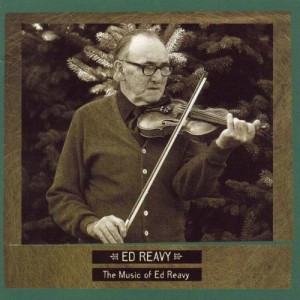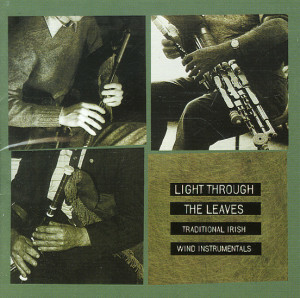In the 1970s, something new yet very old was happening in America. Traditional Irish music was being played and recorded. Just when it looked as though Irish music would fade out and disappear in the modern, mechanized world of the mid-20th century, a new generation of young Irish and Irish-American musicians came under its spell. What began happening to roots music of all kinds happened to Irish music. A revival began and became a renaissance until today, it’s played in pubs, dance halls and social halls, on public radio and television, all over North America.
Just as this phenomenon was starting to take hold, a few musicians and recording technicians went out into the field to record traditional Irish music where it was being made: in people’s homes. The musicians were a hybrid of old and young, veterans and journeymen and newcomers, Irish and American-born. What they all had in common was that they were making the music because they loved it. They certainly weren’t touring the country playing clubs and halls or making records in fancy and expensive studios. That would come later.
Some of those field recordings, funded by the National Endowment for the Arts and other sources, were released by Rounder in the late 1970s and early 1980s. They’ve now been released on CD for the first time, as this fine anthology. The first two in the set are Traditional Irish Music in America, the first featuring music made on The East Coast, the second Chicago. The anthology, all sold separately, also includes The Music of Ed Reavy and The Light Through the Leaves.
 Traditional Irish Music in America — The East Coast
Traditional Irish Music in America — The East Coast
The East Coast (as well as much of Reavy and Light) was recorded, produced and annotated by Mick Moloney, who also accompanies many of the featured artists on guitar, mandolin and banjo. The recordings themselves are very sharp and clear, far above the usual stuff of field recordings. There are 21 tracks, mostly suites of two or more jigs, reels and hornpipes, averaging between two and three minutes per track. They feature 22 musicians, young and old, on fiddle, flute, accordion, whistle and uilleann pipes. They play solo and in duets, trios and quartets, occasionally accompanied by piano.
The playing is top-notch and the varied instrumentation keeps things interesting. It’s hard to pick out any tracks for special mention, but among the best are two solo fiddle sets by then teen-ager Maureen Fitzpatrick, “The Oak Tree” reel and the jigs “An Phis Fhliuch/O’Farrell’s Welcome. Father Charlie Coen plays lovely concertina on a solo set of reels and in a quartet playing two jigs on the final track. And Eugene O’Donnell’s fiddling is very warm and lyrical on a set of hornpipes accompanied by Moloney on guitar.
 Traditional Irish Music in America — Chicago
Traditional Irish Music in America — Chicago
Chicago is not quite as accessible as East Coast. The recordings are more obviously field recordings, with some stray noises and a certain hollowness to the sound. There are fewer musicians involved, and the tracks are grouped by who plays on them, all of which gives this CD a little less variety than its companion.
In addition to the instrumental tunew, there are two very enjoyable songs, “Fair Cassidy” sung by James Keane Sr., and “I Am Asleep” by the multi-talented Maida Sugrue, who also plays fiddle on a lovely polka, accompanying accordionist Terry Teahan.
Fiddler Liz Carroll is the star of this collection, though, accompanying the equally stellar young accordionist James Keane Jr., on two sets of reels, and playing exquisitely a solo set of reels that finish off the disc.
This is from a few years later, but I can’t resist including this video of Liz Carroll and James Keane Jr.
Joe Shannon plays several sets on the uilleann pipes. All are good but would have been more enjoyable sprinkled about the record rather than all in a row at the beginning. Likewise Teahan’s perky accordion and concertina tunes.
The Music of Ed Reavy is a wonderful tribute to the Irish-born fiddler and composer who wrote dozens of contemporary, traditional-style Irish tunes that have entered the common repertoir played and recorded in the past 20 years.
Reavy, who was born in Ireland in 1898 and emigrated with his family to Philadelphia in 1912, started writing music in the late 1920s after playing for a number of years. He was influenced by musicians of various Irish regional styles playing in cities all over the East Coast.
Reavy plays a number of the tunes in this collection. Other musicians include many from the Traditional Irish Music in America discs, including Liz Carroll, Mick Moloney, Maeve Donnelly and others. The recording is for the most part of excellent quality, although the tracks Reavy himself plays are not as sharp and clear.
Reavy played and composed in a fairly distinctive style, with just enough ornamentation but not too much. His music is highly melodic and evocative. As he himself said, “When I was composing music, it used to take me back to Ireland. I’m out here 62 years, but I can retrace almost every step I took in Ireland.” His tunes can likewise transport the listener.
As with the Chicago CD, Liz Carroll’s tracks are excellent, particularly a duet with Armin Barnett on “The Road to the Glen,” and her solo on the intricate hornpipe “The Lone Bush.” Moloney accompanies fiddler Eugene O’Donnell on a set of slow jigs, and also assists Paddy Cronin on the stately reel, “In Memory of Coleman.” The disc isn’t all fiddle music. There’s a reel by Tim Britton on uilleann pipes, a lovely mandolin-guitar duet on “Lad O’Bierne’s Hornpipe,” a tin-whistle tune and a couple of accordion numbers. Lots of variety, and most tracks are under two minutes.
A true treat is Reavy playing a set of reels, including “The Boys at the Lough,” on a 78 rpm record from 1927.
The thick accompanying booklet has a biography of Reavy and a discussion of his music that is at times too technical for the general reader. Of particular interest, though, is a transcript of an interview with Moloney in which Reavy talks about how he names his tunes.
Ed Reavy is a gem among Celtic music recordings.
And The Light Through the Leaves is a breath of fresh air. This disc of “Traditional Irish Wind Instrumentals” spotlights the solo work of eight musicians on flute, whistle and uilleann pipes. The recordings were mostly made by Moloney on his trips around the East Coast and Midwest in the late 1970s, and are of similarly high quality as the other discs.
The sequencing and arrangement of the tracks is particularly good. Not only are the flute, whistle and pipe tunes interspersed, but there’s a variety of jigs, reels and airs of different tempos, and the individual players all have very distinct styles.
The late Al Purcell plays three lovely airs on a full set of pipes, including not just the drones and chanter but also the regulators, which aren’t always used by American players. Bill Ochs also uses the regulators to good effect on a set of jigs, but Tim Britton doesn’t use them at all on his selections.
Flutists Noel Rice and Richard Hughes have fluid styles and get a warm, full tone out of their instruments, while Mike Rafferty plays with an airy “push” style that isn’t all that pleasant to listen to. Larry McCullough, an ethnomusicologist and a top tin whistle player, turns in several good performances, particularly a moderate-tempo set of jigs that includes “The Banks of Lough.”
As with the others in the set, Leaves comes with thorough liner notes by Moloney, including brief bios of the musicians and some historic background on the music.
This entire anthology of Irish Traditional Music in America is a treasure. These are, to be sure, “important” recordings, but they’re also good records, worthy of a place in the collection of anyone who loves Celtic music.
Find out more about the anthology at Rounder’s website.
(Rounder, 2001)


